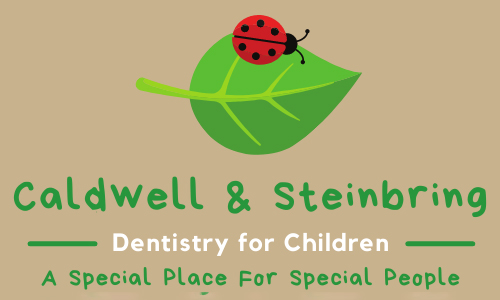Brushing & Flossing
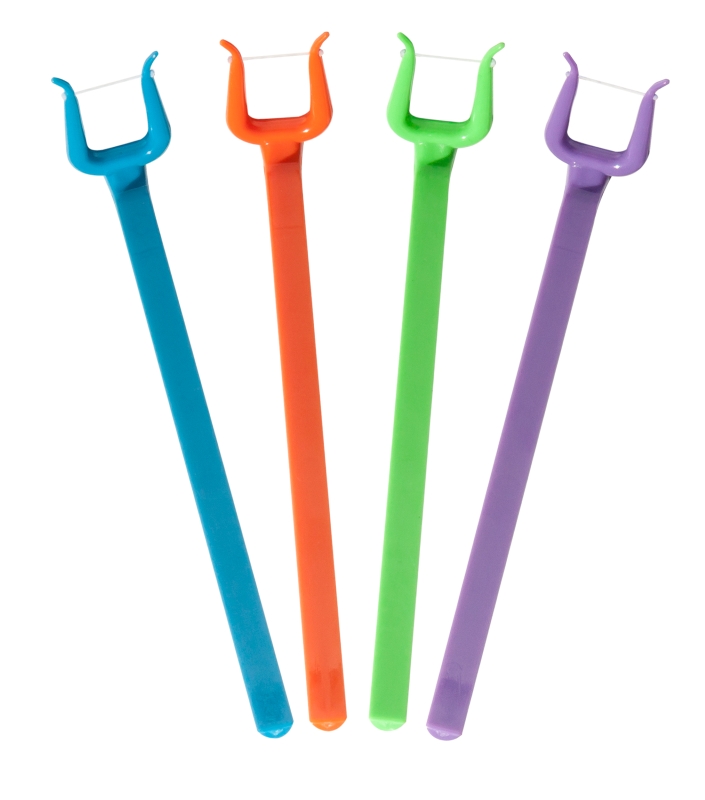 At Caldwell & Steinbring Dentistry For Children, we believe it is very important to establish a strong oral hygiene routine from an early age. Great brushing and flossing habits are vital to your smile and work hand-in-hand with regular visits to your local Sugar Land, TX pediatric dentists.
At Caldwell & Steinbring Dentistry For Children, we believe it is very important to establish a strong oral hygiene routine from an early age. Great brushing and flossing habits are vital to your smile and work hand-in-hand with regular visits to your local Sugar Land, TX pediatric dentists.
Brushing Basics
Most people only brush their teeth for 30 to 40 seconds, but it is actually pediatric dentist recommended that you brush for 2 to 3 minutes. Furthermore, when teaching your children how to brush their teeth, follow these steps to ensure a truly thorough cleaning that combats any built up bacteria.
- Step 1: Use a soft bristled toothbrush and a pea-size amount of fluoride toothpaste. Hold the brush at an angle and move it in small, gentle, circular motions against the teeth.
- Step 2: Gently brush the chewing surfaces of the teeth, and don't forget to get the back ones too!
- Step 3: Using the same circular motions, brush the inside of the upper and lower teeth.
- Step 4: Angling the toothbrush, clean the inside of the top and bottom teeth.
- Step 5: Finish by brushing the tongue and the roof of the mouth (bacteria tends to build up on these areas throughout the day).
- Step 6: Rinse with water.
Flossing Fundamentals
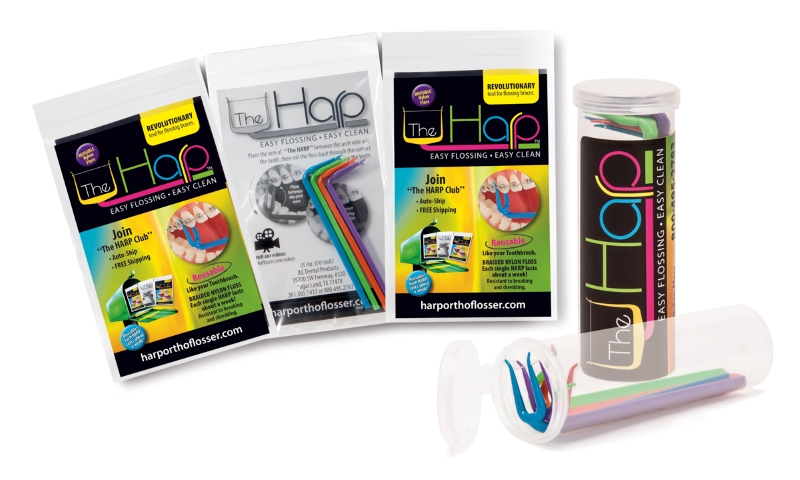 Many people don't floss because they say it takes too much time, it makes their gums bleed, or they believe brushing alone is enough to keep teeth healthy and clean. The truth is that flossing is one of the most important parts of maintaining good oral hygiene because it removes food particles stuck between the teeth that regular brushing can't reach. Our pediatric dentists recommend that everyone aim to floss at least once a day. For best flossing practices, our pediatric dentists also recommend the following steps.
Many people don't floss because they say it takes too much time, it makes their gums bleed, or they believe brushing alone is enough to keep teeth healthy and clean. The truth is that flossing is one of the most important parts of maintaining good oral hygiene because it removes food particles stuck between the teeth that regular brushing can't reach. Our pediatric dentists recommend that everyone aim to floss at least once a day. For best flossing practices, our pediatric dentists also recommend the following steps.
- Step 1: Wrap a strand of floss around your middle fingers.
- Step 2: Gently guide the floss between all teeth down to the gum line, including the backsides of the teeth. This will help remove food particles and plaque.
- Step 3: For each tooth, unwrap a clean area of floss from around your fingers.
***Note: When your child first starts flossing the gums may bleed, but that is normal. After establishing a regular oral hygiene routine the gums should become healthier and bleed less, or not at all.
Introduction
Introduction
Menu- Introduction
- Brushing
- Flossing
- Diet Control
- Dental Visits

The best way to ensure a clean and healthy smile is brushing and flossing. Food particles can accumulate on teeth and turn into plaque, eventually leading to gum disease, tooth decay and even tooth loss.
Good dental hygiene can help avoid costly treatment in the future. Click on the buttons to the left to learn more about how to maintain your healthy smile.
- Step 1
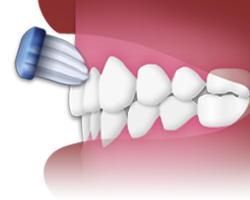
Use a soft-bristled toothbrush and a small strip of fluoridated toothpaste. Holding the brush at a 45-degree angle, move the brush in small, circular motions across the teeth.
- Step 2
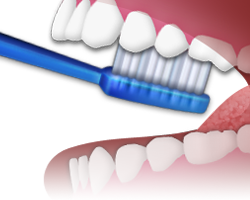
Carefully brush the chewing surfaces of your teeth, making sure to clean the back teeth and between the teeth.
- Step 3
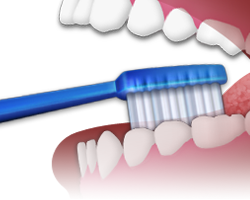
Use the same circular motion to clean the inside of the upper and lower teeth.
- Step 4
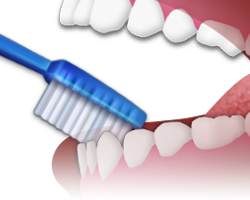
Brush the inside of the top and bottom front teeth by angling the head of the toothbrush up-and-down and brushing in a small, circular motion.
- Step 5
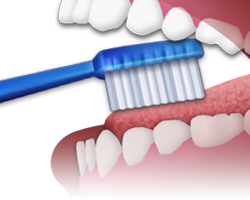
Finish by brushing your tongue and the roof of your mouth before rinsing.
- Step 1

Floss at least once a day. Pull a small length of floss from the dispenser and wrap the ends tightly around your middle fingers.
- Step 2
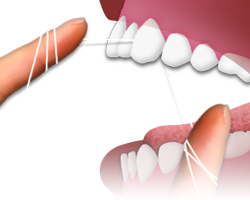
Gently guide the floss between all teeth to the gum line, including the back teeth, to remove any food particles or plaque.
- Step 3
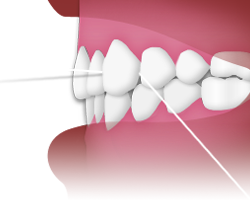
Unwrap clean floss from around your fingers as you go, so that you have used the floss from beginning to end.
- Step 1
- Step 2
- Step 3

A healthy, well-balanced diet can minimize or even completely prevent cavities and other dental problems. Limit your intake of sugary and starchy foods like candies, cookies, chips and crackers. Healthier foods, such as vegetables, low-fat yogurt and cheeses, are not only better for your overall health, but they can promote stronger, healthier teeth as well.

You should visit your general dentist twice a year (once every six months). In order to maintain a healthy smile, it is vital to have professional cleanings and regular check-ups. Your dentist will examine your teeth and provide an evaluation of existing dental problems and proposed treatment. If you have a dental emergency, you should call your dentist immediately.
Brushing with Braces
Braces can make maintaining thorough oral hygiene difficult. However, there are some best practices and special tools you can utilize to make your brushing and flossing easy and efficient!
Let's start with the basic brushing tools. Our pediatric dentists advise choosing either a soft-bristle brush or a bi-level brush (a toothbrush that has shorter bristles in the middle and longer bristles at the edges). Used carefully, an electric toothbrush can also work. But be sure that the electric brush you select is set to a moderate power level whenever you use it, and be mindful of the vibrations. You don't want the back of your brush to hit your brackets or braces.
Best Practices
Drs. Caldwell and Steinbring and their pediatric dentistry team recommend that you brush with a fluoride toothpaste at least two times a day (preferably after meals) for at least 2 minutes each time. Remember to brush all teeth surfaces: outside, inside, and the chewing surfaces as well. And be especially careful to clean the areas between wires and teeth, as well as between brackets and gums — that's where food particles can easily become trapped, causing decay.
Technique
Beginning at the outside surfaces, place the tips of toothbrush bristles flat against teeth then use small circular motions to gently polish them clean. For areas between braces and gums, tilt the brush toward the gum line (down for the bottom teeth, up for the top) while keeping up the circular motions. Next, move on to the chewing surfaces of upper and lower teeth, utilizing a firm back-and-forth motion. Finally, finish by carefully brushing the inside surfaces of the teeth the same way you did the outside surfaces.
Flossing with Braces
As mentioned, to keep teeth and gums clean and healthy you need to floss at least once a day. But how do you get floss under the archwire of your braces? It's not so hard with the help of the Harp Orthodontic Flosser. This innovative tool allows the average patient to thoroughly floss his or her teeth in less than three minutes. The Harp is ergonomically designed to reach all teeth while maneuvering under braces with absolute ease. Remember to slide the floss of the tool all the way under the gums until you hear a squeaky sound. That means you've been thoroughly flossed! Ask one of our pediatric dentistry team members about the Harp today, or order yours online.
Other Special Oral Hygiene Tools
Designed by Dr. Larry Caldwell, the Harp is the perfect flossing tool for all patients with braces. Other tools that can make your oral hygiene routine simpler include the interdental toothbrush (or proxabrush) and the "water pick." An interdental toothbrush has a small tuft of bristles that stick up like a pipe cleaner. It can be used to clean tiny spaces under wires and around bands and brackets. Meanwhile the water pick shoots a small stream of pressurized water at your teeth, which can help dislodge bits of food that become trapped in nooks and crannies. Keep in mind though, while helpful, an interdental toothbrush and a water pick are not substitutes for proper brushing or flossing via the Harp Orthodontic Flosser.
Healthy Smiles to Last A Lifetime
Every day you keep your teeth and gums healthy is an investment in your future. It enables you to get the best results from your dental and orthodontic treatment, setting you on a path to a brighter smile to last a lifetime. For more information on brushing and flossing, the Harp, or our pediatric dentistry and special needs pediatric dentistry services, contact Caldwell & Steinbring - Dentistry For Children today! We'd love to hear from you!
